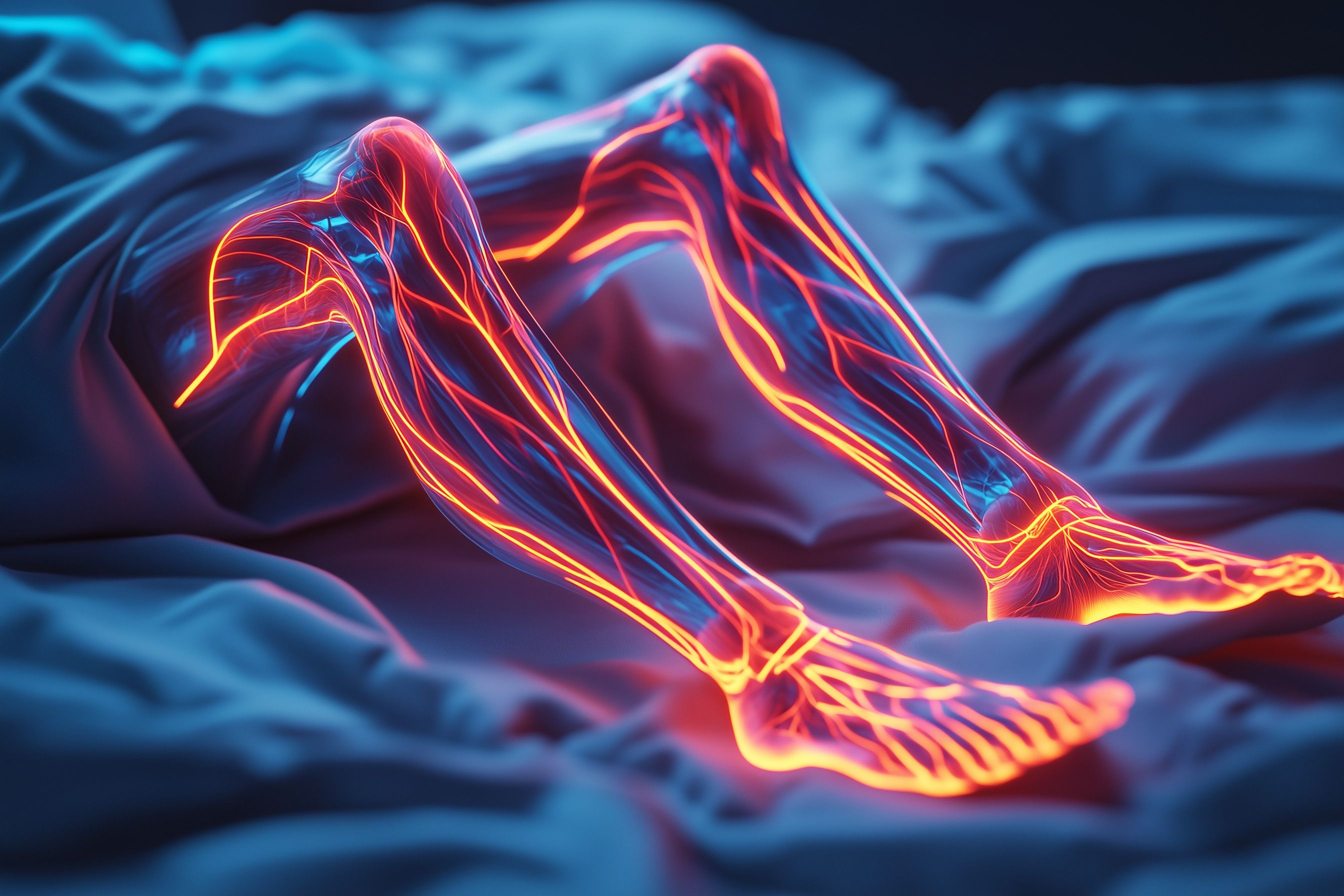- Center on Health Equity & Access
- Clinical
- Health Care Cost
- Health Care Delivery
- Insurance
- Policy
- Technology
- Value-Based Care
Heat-Cold Therapy: A Drug-Free Solution to Improve Sleep in Restless Legs Syndrome
This analysis provides much-needed robust data on the efficacy of heat-cold therapy for mitigating discomfort and insomnia in restless legs syndrome (RSL).
For patients with restless legs syndrome (RLS), superficial heat-cold application could pave the way towards better sleep quality. This approach additionally represents a cost-effective, medication-free method for many patients, according to findings published in Nursing Open.1
Restless legs syndrome remains one of the more common sleep and movement disorders. | Image Credit: © Ulrike - stock.adobe.com

Also known as Willis-Ekbom disease (WED), RLS is typically characterized by convoluted, uncomfortable sensations that leave affected individuals with the irresistible urge to move their limbs—not always just their legs. This condition can drastically impact the ability to fall and stay asleep, which impairs overall sleep quality and can have downstream effects that negatively affect mood and mental health, leading to fatigue, daytime sleepiness, and diminished daytime functioning.
RLS remains one of the more common sleep and movement disorders, with MedlinePlus estimating that the conditions impacts 5% to 10% of adults in the US and 2% to 4% of children. The prevalence of RLS grows with age and, for reasons unknown, women are affected more than men.2
At present, the cause of RSL remains largely unknown, although researchers continue to speculate on the role of multiple environmental and genetic factors. Researchers have hypothesized that iron deficiency, dopamine signaling, genetic variation, are associated with RSL, among other disorders that make individuals more susceptible to the condition, such as Parkinson’s disease, multiple sclerosis, kidney failure and diabetes. Many medications and substances are also thought to trigger RSL, including alcohol, caffeine, nicotine, and drugs prescribed to treat mental health disorders, cardiovascular issues, cold/allergy symptoms, and more.
The current authors outline various pharmacological approaches and lifestyle changes that are recommended for affected individuals.1 Common drugs such as dopamine agonists, opioids, anticonvulsants, benzodiazepines, and more can help to manage RSL; however, these medications carry a risk for adverse events (AEs) that can end up exacerbating symptoms at times or lead to additional issues like drowsiness or dysregulated blood pressure. With AEs in mind, nonpharmacological approaches can be adopted, including abstention from nicotine, alcohol, or caffeine, and the heat-cold method explored in this study.
“Superficial heat application can be considered one of the prevalent treatments for relieving the pain of musculoskeletal origin. This method increases the skin temperature, thus increasing blood circulation to provide more nutrients and oxygen to the cells,” the authors write, adding that “superficial cold application increases the leukocytes, decreases histamine, and strengthens the immune system.”
They also highlight how nurses have historically leaned into the heat-cold method to provide relief for patients, yet there remains a need to demonstrate its efficacy more concretely in clinical research.
A systematic review and meta-analysis was conducted using the databases Google Scholar, ProQuest, PubMed, Web of Science, Scopus, and SID. Data were gathered from the databases’ inception through 2023. Relevant theses, dissertations, registered clinical trials, conference proceedings, and bibliographies were also considered. Seven studies published between 2016 and 2022 were eligible for the analysis, which featured 259 individuals.
Superficial heat-cold application improve sleep quality for those with RLS (standardized mean difference [SMD], 0.685; 95% CI, 0.421-0.950). Furthermore, with increases in temperature, this method became more effective (β = 0.0182; 95% CI, 0.0096–0.0268; P < .05), with optimized results occurring at 42.5 °C (108.5 °F). Furthermore, pregnant women appeared to benefit the most from heat therapy vs other groups (SMD, 0.806; 95% CI, 0.481–1.130; P < .05). The positive impact of superficial heat-cold application dimmished with longer durations (β = –0.031; 95% CI, –0.059 to –0.001; P < .05); 10 minutes proved to be the most effective duration.
Additionally, age played a factor and the intervention’s efficacy decreased with older patient groups (β = –0.013; 95% CI: –0.024 to –0.001; P = .0259). Those aged 20 to 25 years benefitted the most and those aged 60 to 65 years benefited the least.
References
1. Mohammadi MM, Ahmadi M, Vaisi Raygani AA. The effect of superficial heat-cold application on the sleep quality of patients with restless leg syndrome: a systematic review and meta-analysis. Nurs Open. 2024;11(11):e70080. doi:10.1002/nop2.70080
2. Restless legs syndrome. MedlinePlus. Updated May 1, 2018. Accessed November 27, 2024. https://medlineplus.gov/genetics/condition/restless-legs-syndrome/#causes
